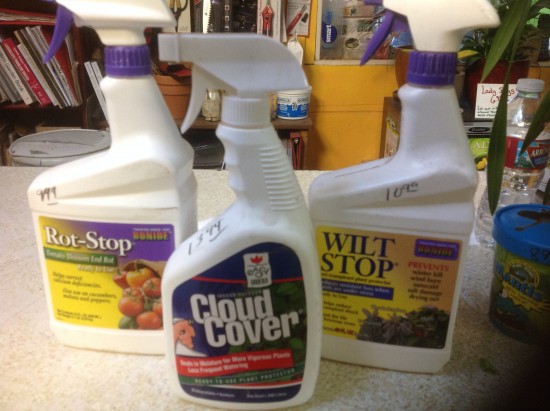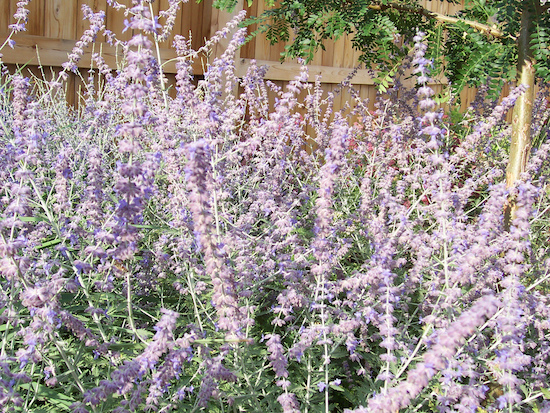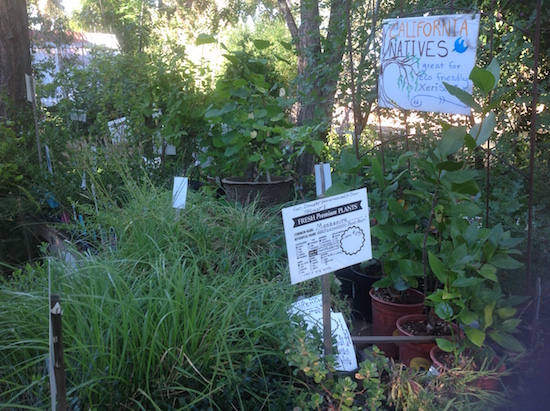Plant of the Month
Russian Sage-Perovskia
Russian Sage is a perennial winner. It takes very little water once established, grows in full sun and is very reliably deer resistant. The foliage is silver and toothed on stems that can reach to 5 ft on the full sized varieties. Small blue flowers in clusters begin in summer and can continue into fall.This year we are seeing more of the shorter growers available so even if your garden is small or you are container growing there is a Russian Sage for you. They can spread by underground runners so give the full sized ones some space to spread. Cut back hard in winter and that is about the only maintenance required other than an occasional fertilizing.
Summer-Fall hours begin in July
July marks the end of spring and we again be closed on Wednesdays. We will still be open 9-5 the rest of the week through fall. Closed July 4th.
Specials
- All summer bulbs – 50% OFF
- Leftover Summer Veggies – 50% OFF
- Russian Sage – 20% OFF
- All shrubs – 20% OFF
Newsletter for July 2016
Summer is here and the temperature’s are climbing. Over 100 degrees as I write this. Last month I talked about the benefits of mulch and anti-transpirant sprays to retain moisture in the ground and in the plant itself. Both help when facing our summer sun and heat. Fruit set may also be effected by high temps. Tomatoes, beans, melons and squash may fail to produce anything new during heat spells. Watch for sunscald on your vegetables and fruit tree bark. Tree Wrap fabric is easy to put on the trunks of young trees and shade cloth can be put over your vegetables. Cucumbers can become bitter with temperature variations of 20 degrees or more, too much shade, calcium imbalance or drying out too much.

Water loss through the leaves is called transpiration. Here at the nursery we experience how much more rapidly this occurs when the temps hit 100 and above. It seems like every few degrees higher can increase the water loss rate significantly. July is the month of year when the transpiration rate is at its highest. Consider uping the length of time your irrigation runs if you can not increase the amount of days. Remember that deep watering creates deeper rooting and plants better able to withstand the heat.

It is difficult to plant anything in July but not impossible. (Use anti-transpirant.) One of the best choices for color and sun are annual vinca. They are native to Madagascar and seem to thrive in the heat. They will bloom till frost and require little maintenance. Lantana is another heat lover, as are zinnias but the zinnias require more water. I love the little classic zinnias that come in gold, orange or white. The plants are small and the leaves are narrow so you cut down on moisture loss that way. Blanket flower, Black-eyed Susans, Russian Sage and Coneflower are good perennials for the heat and bloom through fall.
I know you have all heard of the value of planting natives. These plants are well adapted to wet winters and hot dry summers. They are also habitat and forage for our native bees and birds. A well planned native garden can give year round interest and color. I am going to mention a few:
Valley Oak– I am putting these in because if more of us don’t plant these beauties there will be few left for our children to admire. Vineyards and grazing land are wiping out the seedlings and younger trees and only keeping the heritage oaks. What happens when they die and no one is growing their replacements? The valley landscape will not be the same and in my opinion, less, not to mention lost habitat.
Western Redbud- We admire these every spring along our roadways. Why not plant it in your yard? Magenta flowers in spring, heart shaped leaves in summer, and interesting seed pods in winter.
Manzanita cultivars- Oh but there is manzanita everywhere! Not like these two varieties. Low growing manzanita like the uva-ursi or Emerald Carpet make a handsome evergreen ground cover. They flower early spring and provide food for bees and hummingbirds and each plant can cover 6 sq. feet or more. Manzanita Howard Mc Minn has delicate leaves that cover the 4-5 foot high and wide plant to make a dense mound.
Oregon Grape- The taller variety makes a good foundation planting and the lower variety makes a good ground cover. They look better in morning sun or light shade. The foliage is prickly like a holly and the yellow flowers in spring produce an edible berry for wildlife.
Deer Grass- Grasses are easy to grow and this native is one of my favorites. It is evergreen, forming clumps two feet high and four feet wide. It flowers late in fall with very narrow blooms that last into winter.
Purple Needle Grass- This is the classic Ca bunch grass. It is very useful for re-vegetation and soil stabilization. Feathery ‘flowers’ (called inflorescence when speaking of grasses) early in the season.
CA Fuchsia- Not really a fuchsia, this native spreads by underground stolons and produces lots of red orange tubular, hummingbird loving flowers from summer till fall. Dies back in winter, There are several cultivars available. They grow 8 in. to almost 2 feet depending on variety.
Monardella- Sometimes called Coyote Mint, this native grows about a foot tall in sun and has lavender or white flowers in clusters in the summer.
Stay Cool,
Tanya


